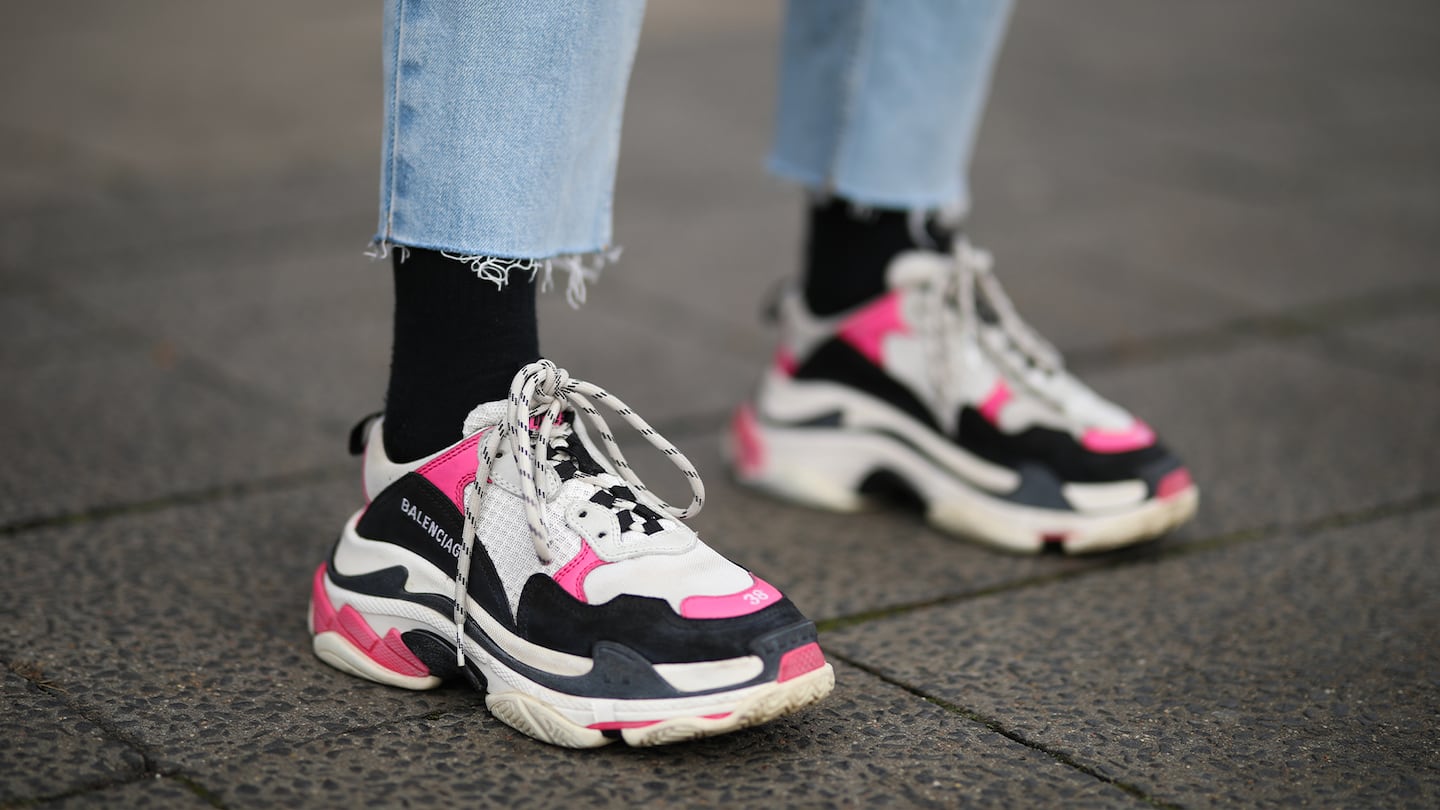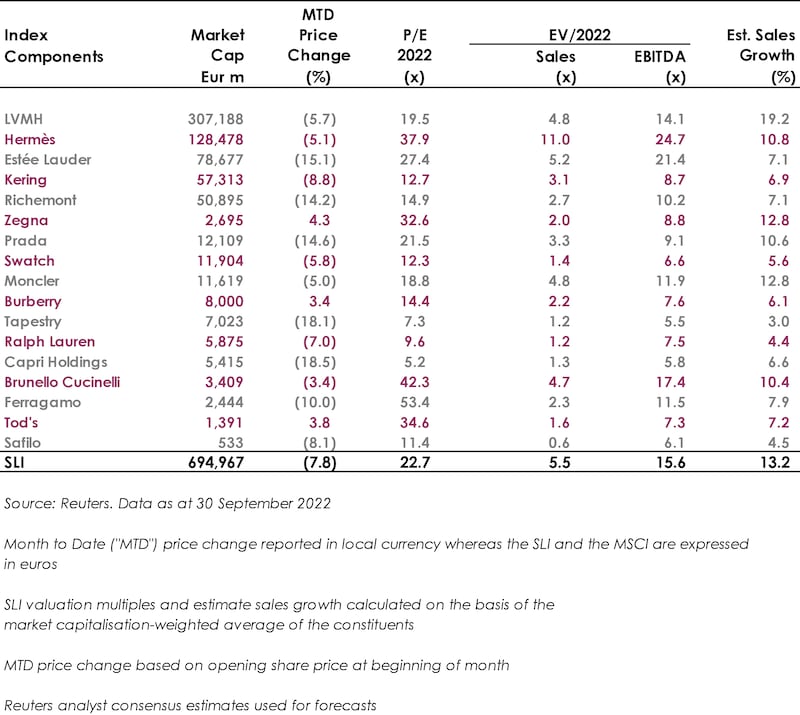
The Business of Fashion
Agenda-setting intelligence, analysis and advice for the global fashion community.

Agenda-setting intelligence, analysis and advice for the global fashion community.

From Burberry to Balenciaga, fashion companies are deepening their presence in the secondhand market. In some cases, they have offered to buy back and then resell goods themselves, or route them to resale sites, which give brands a cut of sales.
The market for secondhand luxury goods is booming: used luxury sales grew 65 percent from 2017 to 2021, more than five times faster than new luxury sales over the same period, according to Bain & Co. And, the consultancy expects secondhand luxury sales to increase at around 15 percent annually over the next five years, double the rate of the primary market.
Nevertheless, not everyone is convinced: “This is not something that is encouraged by Hermès,” said Axel Dumas, chief executive of the Birkin- and Kelly-maker, when asked about the rise of secondhand luxury on a July earnings call. A side-line in pre-owned products would be “to the detriment of our normal customers that come to the stores,” he said.
So, what’s driving the divergence in stance on the secondary market?
ADVERTISEMENT
Luxury resale has come a long way since the aftermath of the Global Financial Crisis, which gave rise to “re-commerce” sites such as Vestiaire Collective and The RealReal. With authentication services and high-quality imagery, these sites were a far cry from the musty vintage stores that used to be the main distributors for secondhand luxury items.
Investment has poured into the sector. Since its founding in 2009, Vestiaire Collective has raised private equity investment of over $650 million in at least nine rounds, the latest of which valued the company at $1.7 billion in late 2021. The company also attracted a minority investment from Kering in early 2021. The RealReal, founded in 2011, raised almost $290 million in six funding rounds before going public in 2019, raising a further $300 million. And in recent years, both of these companies have forged commercial relationships with luxury brands such as Alexander McQueen, Burberry and Stella McCartney.
It’s still early days, but brands have already found several ways to monetise the secondary market. Oscar de la Renta has set up a dedicated website (Encore by Oscar de la Renta) to sell pre-owned and reconditioned items. Gucci launched Vault, an experimental site within a site mixing vintage Gucci products, one-off collaborations and metaverse projects (the Vault landing page has currently been given over to a collaboration with the London streetwear brand Palace, leaving consumers to dig around to find vintage items). Alexander McQueen offers to repurchase items in exchange for store credit and then re-sells the items on Vestiaire Collective, where the brand is listed as a professional seller. But across the board, resale remains relatively inconspicuous within the overall brand experience.
That’s in part because opinion is still split on whether secondhand luxury appeals to core luxury consumers, cannibalising primary market sales, or attracts new aspirants ripe for recruitment. (This is reminiscent of the debate a few years back on whether fast fashion’s ruthless copying of key catwalk pieces eroded sales at designer brands or enlarged their pool of future consumers).
Thus far, the fear that purchasing secondhand luxury items will drive customers away from purchasing first-hand items seems unfounded. According to a recent survey by Boston Consulting Group, 71 percent of buyers of pre-owned items tended to buy products and brands they could not afford new. This suggests that secondhand products widen the market for high-end brands and can serve as potential gateways for first-time buyers.
BCG also found that the secondary market can actually stimulate sales of new luxury goods as consumers often put the money they recuperate from selling used items towards purchasing more new products. Furthermore, consumers are prepared to spend more on a single luxury item as a result of their engagement with the resale market, said the survey.
In addition to the commercial logic, resale also offers brands an opportunity to burnish their sustainability credentials in a market that’s increasingly eco-conscious. It’s telling that Balenciaga described its latest resale initiative as a “circularity programme.”
Back in 2018, Burberry was dragged over the coals when it admitted to burning excess inventory, fuelling a conversation on luxury’s paltry environmental credentials. In the aftermath, the brand not only stopped the practice (and banned fur) but became a first-mover in the resale space, announcing a partnership with The RealReal, whereby individuals selling verified Burberry merchandise on The RealReal were offered a personal shopping experience, including “high tea” at a Burberry store. (The move not only helped the brand weave an eco-friendly narrative but encouraged existing customers back into stores).
ADVERTISEMENT
But the virtues of resale are muddied when scarcity comes into play. Hermès Kellys or Louis Vuitton x Supreme bags often change hands on the secondary market for more than their original retail price. (The red Louis Vuitton x Supreme Keepall Bandouliere 45 travel bag that sold initially for $3,750 can now be bought pre-owned on Farfetch for $20,579). And whilst a price-premium on secondhand limited-editions can be good for a brand’s image, a price premium on a core item, such as the Kelly bag, can lead to imbalance in the primary market for these goods, even frustration amongst customers, no doubt explaining Hermès’ ambivalence to the secondhand luxury market.
The Savigny Luxury Index (“SLI”) fell almost 8 percent in September, driven by increased uncertainty over the global economic outlook and interest rate hikes, not least in the USA. The MSCI only slightly underperformed the SLI, falling over 8 percent over the month.

Going up
Going down
What to watch
The watch sector is way ahead of the curve when it comes to secondhand luxury. There is already a burgeoning online marketplace for pre-owned watches, spearheaded by Watchfinder (acquired by Richemont in 2018), Chrono24 (backed by the Arnault family) and WatchBox. Most traditional watch retailers, such as Bucherer and Watches of Switzerland, now offer secondhand watches alongside new watches. That trend has also spread to general luxury retailers such as Harrods and Selfridges. Next in line will be brands offering a space dedicated to pre-owned items on their own websites or in store. No doubt these watch sector trends will soon be replicated in the wider luxury market.

Pierre Mallevays is a partner and co-head of merchant banking at Stanhope Capital Group.
Balenciaga has partnered with tech platform Reflaunt to roll out its own ‘circularity program’ as brands look to prove out a business model that could help support both revenue growth and sustainability goals.
The luxury label is partnering with tech-and-logistics platform Reflaunt to help customers sell on their old Balenciaga clothing and accessories.
This week, Gucci launched a partnership with The RealReal, betting that the rewards of engaging with the second-hand market outweigh the risks.
The Swiss watch sector’s slide appears to be more pronounced than the wider luxury slowdown, but industry insiders and analysts urge perspective.
The LVMH-linked firm is betting its $545 million stake in the Italian shoemaker will yield the double-digit returns private equity typically seeks.
The Coach owner’s results will provide another opportunity to stick up for its acquisition of rival Capri. And the Met Gala will do its best to ignore the TikTok ban and labour strife at Conde Nast.
The former CFDA president sat down with BoF founder and editor-in-chief Imran Amed to discuss his remarkable life and career and how big business has changed the fashion industry.